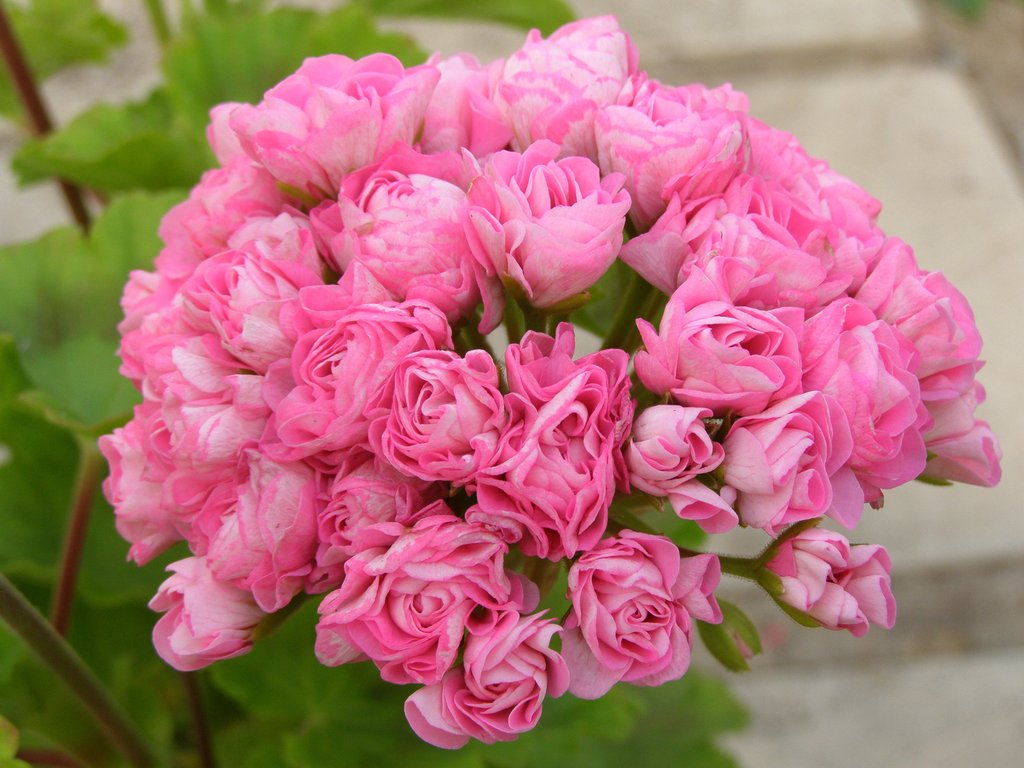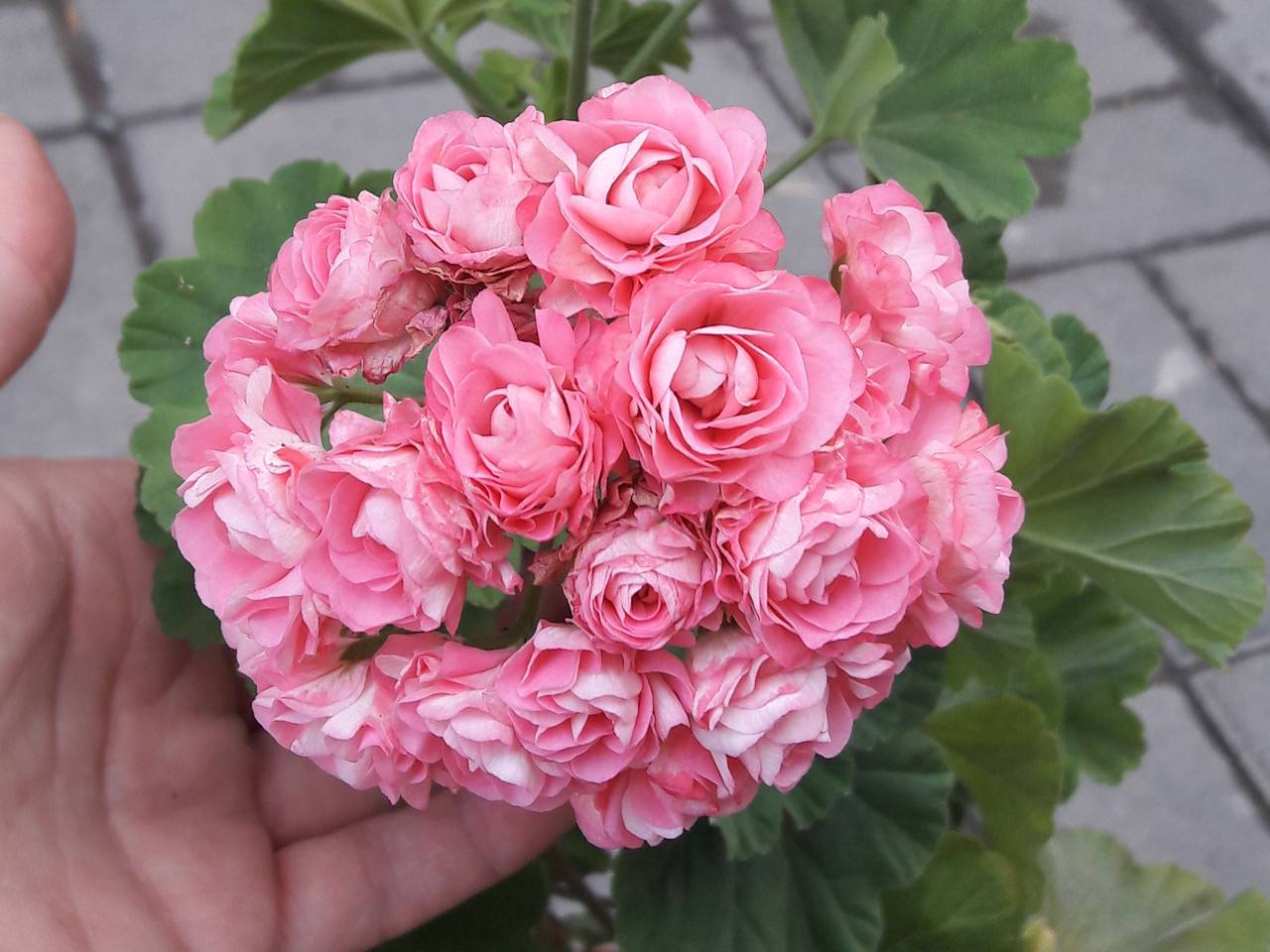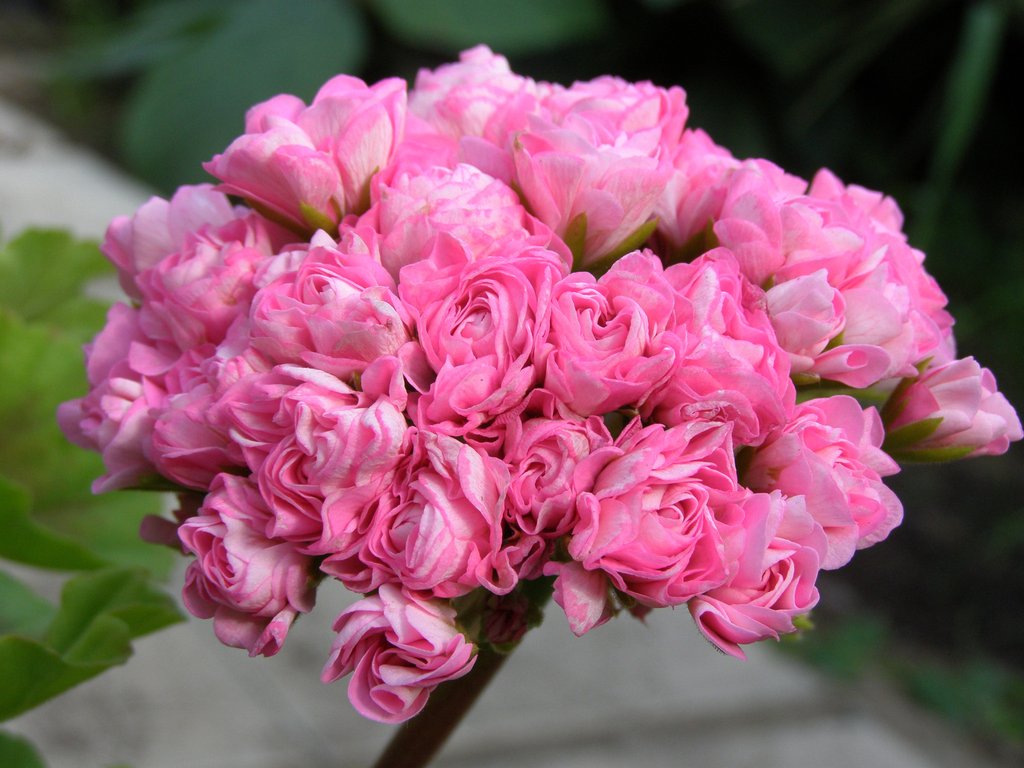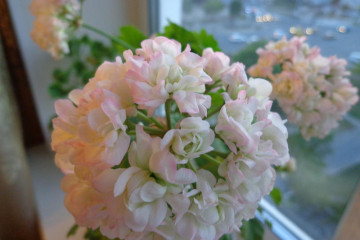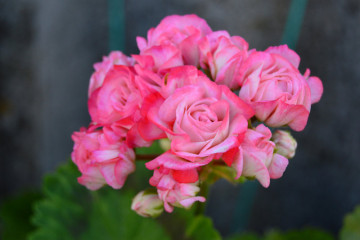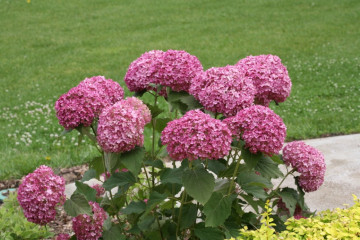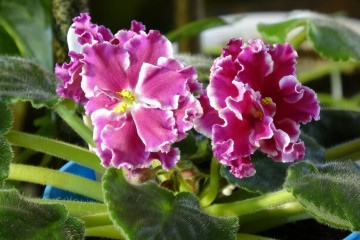Pelargonium Australian Pink Rosebud
Content:
Pelargonium australian rosebud is a graceful bloom in large inflorescences with large leaves. It appeared in Australia and looks like a bush rose. Unpretentious to care for and blooms almost all summer. The plant is afraid of frost and must be dug out for the winter.
Short description, history of origin
This type of flowers is popular among flower growers due to its chic appearance and minimal time spent on care and cultivation. Pelargonium australien pink rosebud can be grown without much difficulty at home or in the garden. In Europe, the flower appeared in the seventeenth century. It was brought to the Russian Federation from Australia, and a new species was bred in 1827 as a result of a mutation when crossing brilliant geranium and pelargonium, which was preceded by long attempts to create. The flowers have a lot of terry petals, united in corollas, which in appearance resemble roses. They are completely odorless.
How to care for Australian Pink Rosebud at home
For Pelargonium Australian rosebud, the air temperature is not lower than ten degrees Celsius. In summer, a pot of flowers can be kept outside, but when it gets colder, bring it into the house or dig it out.
It should be borne in mind that the plant loves light, but does not like too intense lighting, so diffused lighting is optimal. Windowsill lighting is ideal when intense sunlight hits for several hours a day.
Watering rules and humidity
This type of pelargonium does not like it when the soil is watered too much. A dry microclimate is also unacceptable. It is advisable to water the plant away from the stem after first checking the condition of the earth. If the soil is damp, there is no need to water it. The plant will more easily tolerate the lack of watering than waterlogging. On average, the plant is watered several times a week with water at room temperature. After transplanting, it is watered carefully and not overmoistened.
Top dressing and soil quality
Pelargonium swanland pink loves a nutrient medium and loose soil with neutral acidity. It is advisable to use calcined soil before planting so that there are no parasites in it. Fertilization begins in the spring. In order to accelerate growth, nitrogen can be added to their composition, which will contribute to the active development of leaves. From the moment the buds appear, the soil is fed with phosphorus and potassium. The plant may not bloom with insufficient feeding.
Flower container size
It is better to use a small pot, but with each transplant, its volume must be increased. This will stimulate the flowering of the plant, not its growth. The size of the pot has a significant impact on further development. If it is smaller in size than the root system, rotting and growth inhibition may appear. Too large a pot will stimulate flower growth rather than flowering.
Pruning and replanting
The flower grows quickly and needs to be replanted frequently. Before planting, the pot is treated with disinfectants. To form a bush of a beautiful and regular shape, the shoots are cut from the sides, so that new buds begin to appear.
Pink rosebud pelargonium is pruned in order to obtain a harmonious crown. Most branches are formed in February, and the rest of the time - as needed.
Features of flowering plants
The plant blooms all summer long. The inflorescences have a multi-colored color and the degree of flowering depends on the conditions in which the flower is kept. On average, about 20 or more flowers can appear on one bush per season, with an inflorescence diameter of 3 to 4 cm.
A period of activity and rest
The period of activity for a flower is observed from the last months of spring to October, and dormancy from early October to spring. In winter, the flower is placed in a darkened place and the amount of watering is reduced.
Types and shape of flowers
Flowers astralia pink pelargonium pink corrugated shape. The petals are lighter on the inside and colored white, and on the outside they are pink or red. Flowers are collected in a ball. The buds look like roses, which is why the name rosebud appeared. The leaves of the plant are large, dark green.
Flower propagation by cuttings, when it is better to do it
Geranium swanland pink propagated by cuttings. This procedure is carried out in the spring, since summer is the optimal period for rooting. The grafting procedure consists of the following steps:
- you need to cut off the stem from 5 to 10 cm long;
- remove all buds and leaves from the stem;
- make an incision above and below the kidney;
- put the handle in a darkened dish;
- place the dishes on the windowsill and after two weeks the roots should appear.
Cuttings can be placed directly into the ground, for this it is pretreated with a disinfectant. The plant germinates at a temperature of +20 ℃.
Growing problems, diseases and pests
Australia Pelargonium has specific diseases. It can also be destroyed by pests and parasites. Pelargonium australian pink rosebud leaves turn yellow due to lack of light or too dry air in the room. To eliminate these symptoms, you need to often spray the flowers and move the pot to a place with good lighting. Sluggish and unhealthy flowers can be due to overflow and stagnation of water in the root system. To eliminate the symptoms, Pelargonium swanland pink is not watered for some time.
The rapid wilting of flowers may appear due to the presence of a fungus that destroys the flower. It is treated with Fitosporin. Brown spots indicate bacterial damage. The plant must be transplanted into another land and treated with fungicides. Insecticides can help control aphids.
Common diseases include the fungus Botrytis, which begins to develop due to over-watering. It manifests itself in the form of spots and a gray cannon on the foliage, and therefore they quickly fall off. To save the plant, you need to cut off all damaged branches and leaves, spray the plant with preparations for the fungus.
How to treat
In the presence of bacteria, the stem darkens. To eliminate this ailment, the ground must be weeded, and the plant must be sprayed with special antibacterial solutions. The presence of ticks is indicated by yellow specks on the plant. They appear due to dry air. To correct the situation will help the soap used to treat the plant, as well as the preparation "Lightning".
Aphids are manifested by the fact that the leaves are curled. To eliminate the infection, diseased leaves are cut off, and the rest are treated with soapy water.
Australia pink pelargonium has a graceful appearance, unpretentious care, easy to breed and odorless. It is grown by flower growers even without much experience in flower cultivation. At the same time, she pleases with her lush flowering and beautiful appearance.
